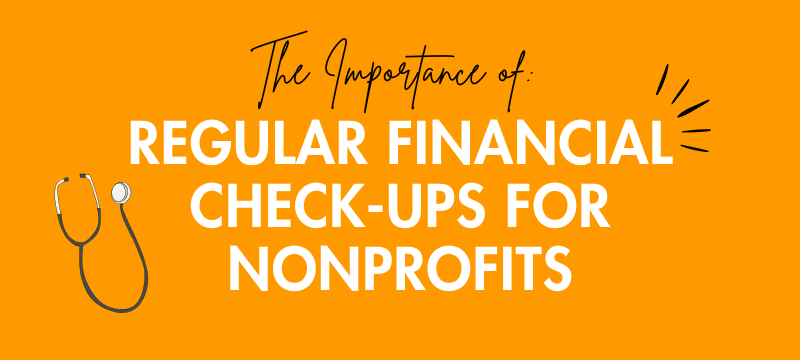The Importance of Regular Financial Check-Ups for Nonprofits We’re wired to schedule annual medical check-ups…

Associations’ CFO Reveals Secrets on Building a Cash Reserve for Your Non-Profit
With over two decades at Otus Group, working with more than 200 non-profit organizations, I’ve witnessed firsthand the vital role of financial reserves. They’re not just a buffer; they’re a strategic tool for financial agility and resilience.
Why Reserves Matter
Reserves are essential for navigating unexpected financial challenges, sustaining operations during downturns, and seizing growth opportunities. They embody an organization’s foresight and readiness for the future.
Determining the Right Amount
The ‘right’ amount of reserves isn’t a universal number. It varies, influenced by factors like operational costs, funding stability, and the organization’s nature. Industry benchmarks suggest 3-6 months of operating expenses, but some non-profits may need more, depending on their specific situations.
We are working with a client that already has a reserve of $80K set aside but wasn’t sure if they had enough for their operations. A quick review of their monthly financials revealed that they consistently had expenses of $65K. One might easily conclude that their cash reserve was substantially underfunded.
However, upon deeper analysis, much of the monthly expenses were non-recurring, event-related expenses that could be halted without additional cost. If things worsened, they could simply cancel the contract without further obligation. These event-related expenses should not be part of the reserve calculation.
We redefined their ‘core’ monthly expenses to $20K, making their $80K reserve more than sufficient for four months, exceeding the 3-month “rule of thumb” guideline.
Assessing Your Non-Profit’s Needs
Determining your ideal reserve level involves a thorough understanding of your organization’s financial dynamics:
- Cash Flow Variability: Evaluate the predictability of your funding sources. More variability means a need for a larger reserve. For example, if your organization relies heavily on government grants and you have to apply for the grants annually, you might want to have a higher amount of reserve given the unpredictability of your funding. Conversely, if you are running a mandatory membership organization, cash flow from your organization is more reliable, and you can opt for a smaller reserve.
- Expense Analysis: Look at fixed versus variable costs. In the case mentioned earlier, understanding the core budget and being able to peel off the non-essential expenses helped lower the amount of cash reserve required.
- Risk Tolerance and Future Plans: Consider your organization’s capacity to handle financial uncertainties and long-term objectives. The availability of a line of credit and other sources of funding will also influence the determination of the reserve amount required.
Building Your Reserves
Developing reserves is a strategic process involving setting aside surpluses, creating a designated reserve fund, and identifying cost-saving measures to bolster the fund.
Recently, I started teaching my 8-year-old son the phrase, “How do you eat an elephant? One bite at a time.” He interpreted that quite literally and laughed about it.
Set a goal, agree on a plan and a course of action, recognizing that you won’t get there tomorrow. You’ll have to break it down into manageable chunks for your organization. It’s reasonable in some cases to take a few years to reach the desired level of cash reserve.
Maintaining and Managing Reserves
Effective reserve management involves regular reviews, prudent investments focusing on liquidity and low risk, and maintaining transparency with stakeholders.
Some of the associations and non-profit organizations that we work with re-evaluate their needs on an annual basis. They have definitive guidelines as to how much they want it to be, and this is part of their annual review procedure.
At the end of the day, you can’t set up a cash reserve 10 years ago and expect it to be as relevant today.
In addition to regular review, it’s also important to consider investing the amount to generate some fixed income so that the money isn’t just set aside and not generating revenue.
Conclusion
Balancing industry advice with a tailored strategy based on your non-profit’s unique needs is key to effective reserve planning. My experience has shown that each organization’s reserve strategy must be as unique as its mission. If you are interested in building a plan or determining the appropriate amount of cash reserve, you can set up a meeting with us below.



